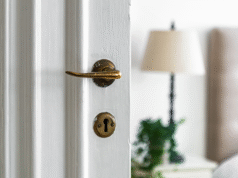Texture is an essential element of home interior design that can add depth, interest, and warmth to a space. It refers to the tactile quality of surfaces in a room, and it can be created using various materials, such as fabrics, wood, metals, and stones. Texture is crucial in interior design because it creates visual interest, adds dimensionality, and creates a feeling of luxury and comfort. In this article, we will discuss the importance of texture in interior design and provide tips on using different textures to enhance the look and feel of your home.
The Importance of Texture in Interior Design
Texture can transform a plain, boring room into a beautiful, inviting space. It is all about creating contrast and adding depth, and it can be used to create a variety of moods and styles. For example, rough, natural textures like stone or wood can create a rustic, cosy atmosphere, while smooth, glossy surfaces like glass or metal can create a modern, sleek feel.
Texture also adds visual interest to a room. When you have a variety of textures in a space, it creates a dynamic visual experience that draws the eye around the room. Texture can also create a sense of luxury and richness in a space. For example, adding a plush, shaggy rug to a room can make it more comfortable and inviting.
How to Use Texture in Interior Design
Using texture in interior design can be intimidating, but it doesn’t have to be. Here are some tips on how to use texture to create a beautiful, interesting space:
1. Start with a neutral base
When you’re working with texture, it’s important to start with a neutral base. A neutral base provides a blank canvas that you can build on with different textures. Neutral colours like beige, grey, and white also provide a sense of calmness and tranquillity that can be enhanced by adding texture.
2. Mix textures
Mixing textures is a great way to create interest and depth in a room. For example, you can pair a rough, textured rug with a smooth, glossy coffee table to create contrast. Or you can mix fabrics, such as a plush velvet sofa with a linen throw pillow.
3. Use different materials
Texture can be created through the use of different materials. For example, you can use wood, stone, metal, or fabric to create texture in a space. Using various materials can add interest and create a dynamic visual experience.
4. Add layers
Layering textures is a great way to create depth and dimensionality in a room. For example, you can layer a fluffy throw blanket over a leather chair or a woven rug over a hardwood floor. Layering textures add visual interest and create a cosy, inviting atmosphere.
5. Consider the scale
When working with texture, it’s important to consider the scale of the textures you’re using. Large, bold textures can make a space feel overwhelming, while small, delicate textures can get lost in a room. Be mindful of the size and scale of the textures you use to ensure they work together harmoniously.
Examples of Texture in Interior Design
Here are some examples of how texture can be used in home interior design:
1. Woven textures
Woven textures, such as wicker, rattan, and jute, are a great way to add warmth and natural texture to a space. You can incorporate woven textures through furniture, such as a rattan chair or a jute rug.
2. Metallic textures
Metallic textures, such as brass, copper, and chrome, are a great way to add a modern, sleek feel to a space. You can incorporate metallic textures through lighting fixtures, decorative objects, or furniture legs.
3. Natural textures
Natural textures, such as wood, stone, and brick, are a great way to add a rustic, cosy feel to a space. You can incorporate natural textures through flooring, accent walls, or decorative objects like vases or sculptures.
4. Soft textures
Soft textures, such as fur, velvet, and plush fabrics, are a great way to add comfort and luxury to a space. You can incorporate soft textures through throw pillows, blankets, or even upholstered furniture.
5. Patterned textures
Patterned textures, such as geometric prints or floral patterns, are a great way to add visual interest and personality to a space. You can incorporate patterned textures through wallpaper, textiles, or even artwork.
Incorporating Texture in Different Rooms
Different rooms in your home may require different approaches to incorporating texture. Here are some tips on how to incorporate texture in different rooms:
1. Living room
The living room is a great place to experiment with texture. You can incorporate texture through area rugs, throw pillows, curtains, and wallpaper. Mixing different textures, such as velvet and leather or wool and silk, can add interest and depth to the space.
2. Bedroom
In the bedroom, texture can create a cosy, inviting atmosphere. Soft textures like plush blankets and velvet curtains can make the space feel luxurious and comfortable. Adding a textured headboard or a woven rug can also add visual interest and dimensionality.
3. Kitchen
In the kitchen, texture can be incorporated through materials like stone or wood. Stone countertops or a backsplash can add a natural, rustic texture, while a wooden kitchen island or dining table can add warmth and character to the space.
4. Bathroom
In the bathroom, texture can be incorporated through materials like marble or ceramic tile. Adding a textured shower curtain or bath mat can create interest and dimensionality.
Conclusion
Texture is crucial in home interior design by adding depth, interest, and warmth to a space. Incorporating different textures, such as woven, metallic, natural, soft, or patterned, can create a dynamic visual experience and transform a plain room into a beautiful, inviting space. When using texture, it’s important to consider the scale, mix different textures, and use a neutral base to provide a blank canvas. By incorporating texture in different rooms, you can create a cohesive, harmonious look that reflects your personal style and enhances the functionality of your home. Planning to work on your home’s furnishings? Reach out to the team at My Home Rocks today.








